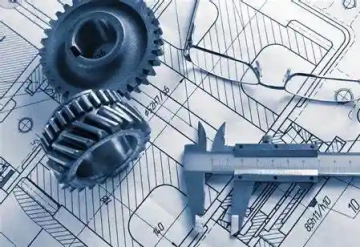THANK YOU FOR SUBSCRIBING

Why a paradigm shift is essential for the delivery of Design Services.
Ken McBryde, Design Director at Gensler

 Ken McBryde, Design Director at Gensler
Ken McBryde, Design Director at GenslerKen McBryde is a Design Director of Architecture at Gensler and Adjunct Professor of Architecture at The University of Sydney. This article has been prepared independently from the University of Sydney.
Let’s Start with a Definition
There are many terms used to describe prefabricated or off-site manufacturing in the construction industry. As architects and product designers, we are specifically interested in the ‘D’ for Design of Design for Manufacturing Assembly and Disassembly.
We define DFMAD as follows:
DFMAD is a methodology to optimize the ease and efficiency of manufacturing and assembly processes. We resolve construction systems, modules, panel sizes, cranage, integration of services, structural connections, and architectural junctions to facilitate ease of assembly and disassembly from the outset. It relies on a highly collaborative multi-disciplinary design approach. DFMAD benefits from choosing manufacturing partners early in the project timeline or if not, designing for the capabilities available within the industry.
It is designed with data-driven BIM (Building Information Models) specifically with manufacturing capabilities, materials, tolerances, and buildability in mind. Designing in close partnership with the manufacturers and suppliers reduces material waste, improves buildability, and reduces on-site construction time. This dramatically reduces reliance on site-based trade skills.
“To solve two of the world’s two big challenges, namely reducing our impact on the planet, and our burgeoning populations’ accommodation requirements, we need to adopt Design For Manufacturing, Assembly & Disassembly (DFMAD). “
Why do Designers Need to Embrace DFMAD?
“DFMAD is crucial to leveraging the power of design.”
We cannot solve the world’s insurmountable and accelerating accommodation shortages with the inherent inefficiencies in conventional construction methods.
Furthermore, of major significance is the designers' and architects’ responsibility, and indeed the unmatched ability to respond to the world’s climate crisis.
To understand the significance of DFMAD, we need to unpack the five significant trends which limit the value of ‘business-as-usual’ architectural and design services.
Five Trends
01 Size and Complexity
Architectural projects are becoming larger and significantly more complex. The design industry needs to develop seamless, inter-connected, and highly collaborative approaches to design that break down traditional silos and the combative nature of the construction industry. We need to draw on the expertise of diverse thinkers including applied physicists, mathematicians, biologists, and strategists, all informed by data-driven design decisions and sharing one BIM platform.
02 Get Our Hands Dirty
The continual downward pressure on architectural fees has driven the need for businesses to adopt sophisticated tools while using less experienced designers. This has led to alternative design procurement processes, like design and construct (D&C), and early contractor involvement (ECI). These types of processes have resulted in a lack of site experience for architects.
03 Disassembly
The world’s needs are changing fast. Consequently, buildings are becoming superseded at increasing rates. Therefore, disassembling and reusing a building’s components is essential in a circular economic outlook.
We appreciate the essential ingredients in DFMAD are the structural connections and the joints between assemblies. Until a highly efficient connection is developed the design solution is not complete. Similarly, the joints between assemblies are one of the earliest focuses in our multidisciplinary collaborative design process. Connections and joints need to be designed to help disassemble and reuse a crucial part of circular economics and reduction of embodied carbon.
04 Supply Chain
The delivery of materials and components is affecting construction timeframes and the commercial feasibilities of development projects. This has been particularly worsened by the pandemic conditions and geopolitical unrest.
05 Value Engineering
In concert, the earlier four trends result in conventional architectural practice producing highly elaborate designs with a limited understanding of how projects can be built.
Value engineering processes have become increasingly necessary to deliver clients' projects on time and within budget. When the designer and contractors are running this process separately, it can be seen as highly threatening to the designers. This is particularly common if the design purpose is not clearly articulated or the design has not taken into account how it can be delivered.
Positive By-Products
Adopting design for manufacture and assembly methodologies has three highly desirable by-products for our industry:
01 Diversity, Equity & Inclusion
Offsite manufacturing greatly improves diversity and in particular gender balance in the construction industry. Going to work in the same place and same time every day makes it much easier to organize childcare. Furthermore, the workplace is clean, tidy, and mechanized, so individuals no longer need to be physically capable of lifting and carrying heavy materials.
02 More like Kinetic art
Conventional construction sites are typically highly disruptive, particularly in the case of built-up in urban areas. This traditional construction brings noise, dust, and excessive heavy vehicle movements for deliveries of materials and site-based workers. DFMAD results in far less site-based construction and is predominantly more about the handling and assembly of pre-assembled components.
03 Reduces Risk of Exposure
Offsite manufacturing requires far fewer builders on site. Instead, with DFMAD, smaller teams of builders are distributed across a range of manufacturing facilities. In circumstances of disease and illnesses, smaller teams on site lead to a lower risk for supply chains. It also reduces the risk of spreading diseases in remote area communities that are not as regularly exposed to regular infectious diseases as city dwellers.
Outcomes for the Development Industry
Through the power of DFMAD, coupled with diverse multidisciplinary minds, we can design projects which are built faster, safer, and to higher standards. We need to seek a better understanding of the way buildings are put together, combined with advanced digital design and parametric tools. Implicit in this is a deep appreciation and respect for seamless, integration of design and construction methodology. This design methodology includes bringing defined elements from the manufacturer’s components into shared digital models. DFMAD offers a practical solution for carbon reduction targets and burgeoning accommodation requirements.
Read Also
Development of the Logistics Warehousing Market in Brazil
Driving Innovation and Preserving Tradition
Operational Leadership VS Field Leadership in the Utility Construction Business
People-First Innovation: Developing Virtual Design and Construction (VDC) Training Programs to Empower Field Team Members
Sustainable Projects: Aligning Business and Purpose in Latin America
Engage Smarter: Why Constraints Matter More Than Hazards

 Copyright © 2025 All Rights Reserved | by:
Copyright © 2025 All Rights Reserved | by: Construction Tech Review
| Subscribe | About us | Sitemap| Editorial Policy| Feedback Policy














